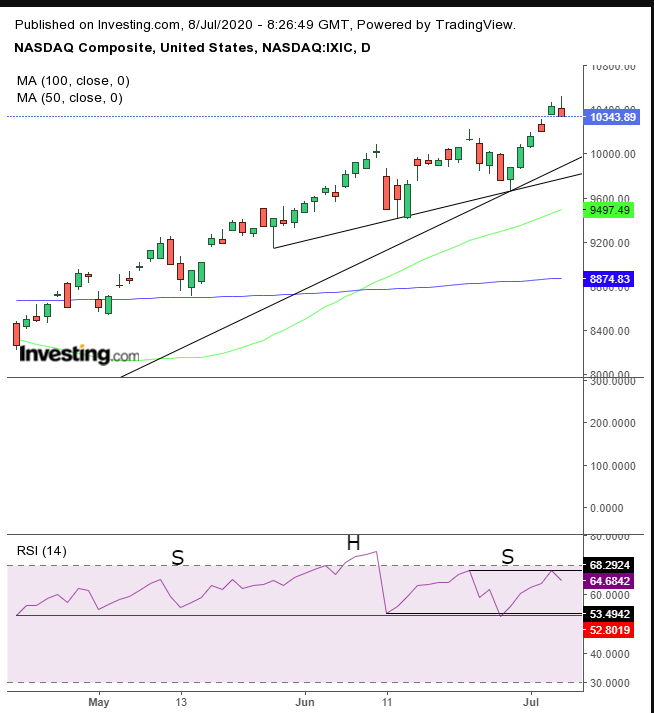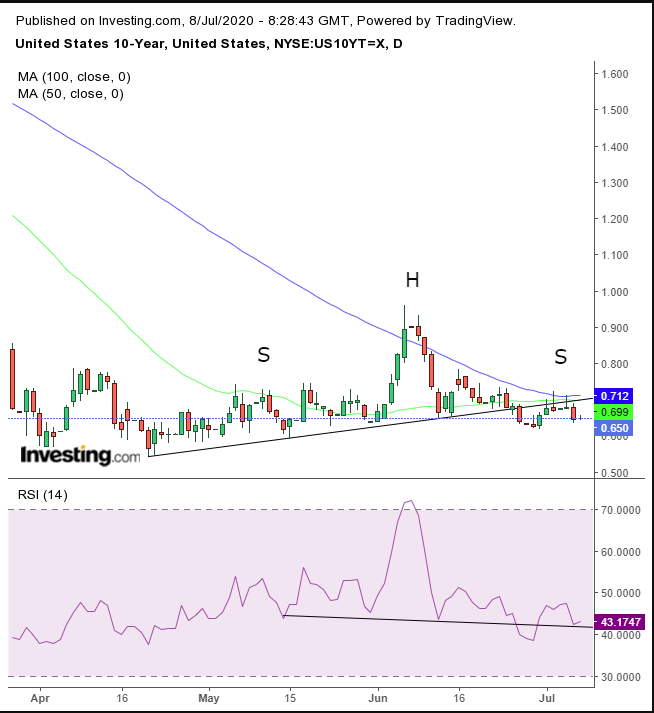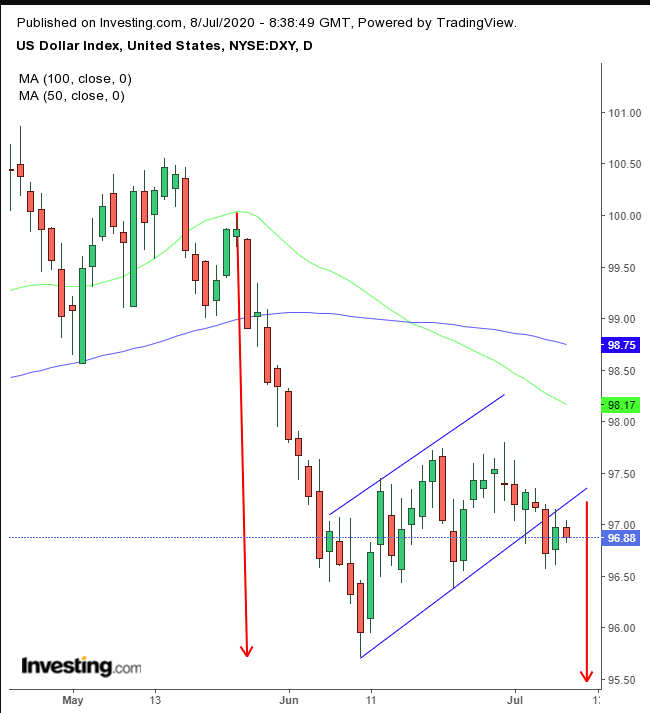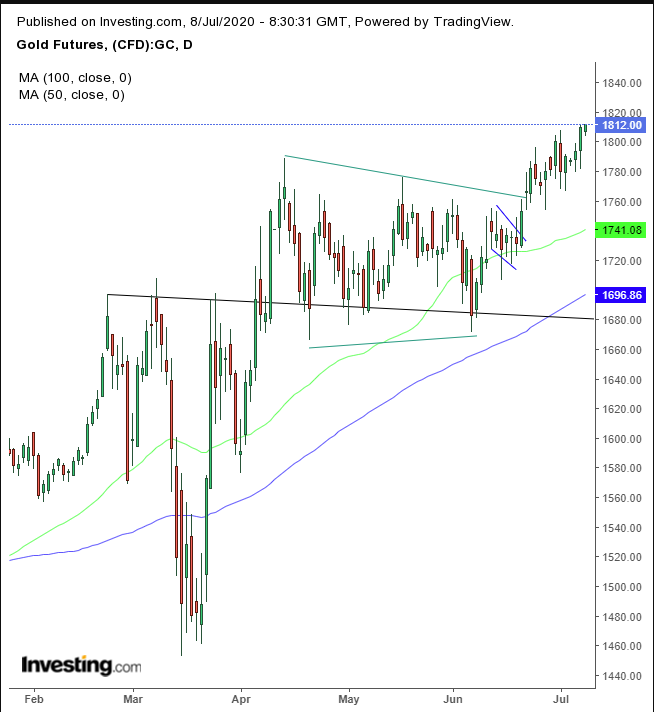- Signs of a protracted economic slump led to a global selloff; US futures faltered
- Dollar softens
- The EIA releases crude oil inventory data later today.
- All eyes will be on the US weekly Initial Jobless Claims and Continuing Claims reports, published Thursday.
- Singapore holds its general election on Friday.
- Futures on the S&P 500 Index increased 0.2%.
- The Stoxx Europe 600 Index fell 0.5%.
- Germany’s DAX declined 0.4%.
- The MSCI Asia Pacific Index was little changed.
- The Dollar Index dipped 0.1% to 96.87.
- The euro gained 0.1% to $1.1287.
- The Japanese yen was little changed at 107.47 per dollar.
- The British pound advanced 0.1% to $1.2557.
- The yield on 10-year Treasuries advanced one basis point to 0.65%.
- Germany’s 10-year yield dipped one basis point to -0.44%.
- Britain’s 10-year yield declined two basis points to 0.161%.
- West Texas Intermediate crude dipped 0.4% to $40.45 a barrel.
- Gold climbed to $1,814.15 an ounce.
Key Events
Equities in Europe slumped on Wednesday, for the second day, while US futures for the Dow Jones, S&P 500, NASDAQ and Russell 2000 fluctuated, after data on rising cases of COVID-19 around the world signaled there's still a long road ahead for a true global economic and pandemic recovery.
The dollar fell and gold jumped. Oil continues to hover around the $40 level.
Global Financial Affairs
US futures were down at the time of writing, in a volatile session, as contracts continue to be exchanged between traders who want out and those who still believe there's more upside for equities.
The Stoxx Europe 600 Index opened lower, dragged down by energy companies and banking firms, as the continued rise in confirmed coronavirus cases—currently at 11.8 million globally and more than 544,000 fatalities—dispelled the outlook for a V-shaped recovery.
London-listed HSBC Holdings (LON:HSBA) dropped 3.5% after news emerged that President Donald Trump’s top advisers were considering punishing banks in Hong Kong by undermining the Hong Kong dollar's peg to the USD, which could potentially limit the Asian city's financial institutions from acquiring US dollars.
Most Asian indices traded lower this morning, following Tuesday's selloff on Wall Street and Europe's lower open today, as coronavirus fears sapped risk appetite.
Australia’s ASX 200 led the declines, (-1.5%), while China’s Shanghai Composite outperformed for a third straight day, (+1.7%) as the broader public continues to be lured into the equity markets, on the optimism generated by a front-page editorial in a local journal suggesting the government will support the country’s financial market.
Yesterday, during the New York session, equities dropped. Hotel and airline airline shares underperformed, on indications the economic recovery isn't fully underway yet, after German Industrial Production and API Inventories disappointed.
For every stock listed on the S&P 500 Index that climbed, six declined.
However, the tech-heavy NASDAQ, after posting a new all-time high on Monday, was dragged down by mega-cap technology giants Microsoft (NASDAQ:MSFT) and Amazon (NASDAQ:AMZN). The index finished Tuesday lower.

The NASDAQ trimmed Monday’s surge, producing a shooting star, after a month-long lethargy. The RSI provided a negative divergence and might be forming a H&S top.
Yields, including for the 10-year Treasury, found their footing after retreating from a broken trend line.

Rates may be developing a H&S continuation pattern.
The dollar pared yesterday’s gains.

It traded below its rising channel for a third day, reducing the likelihood of a bear trap.
Gold hit its highest level in almost eight months, at $1,819.85.

After a long wait, the precious metal appears to be heading toward the objectives signaled by the symmetrical triangle and H&S patterns. Could $1,900 be imminent?
Oil was flat, trading around $40.55, after the API reported a surprise gain in crude stockpiles.
